Knowing proper injection techniques can save you from discomfort and harm, says vet
No one giving injections to cattle wants to accidentally get stuck with a needle; most producers will do everything in their power not to. And yet it happens, and the results can be deadly. Just ask Dr. Cody Creelman. “A producer was treating a sick calf from the cab of his truck. He was filling […] Read moreTag Archives vaccines
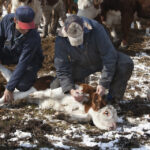
Don’t stick yourself — take care when injecting
Knowing proper injection techniques can save you from discomfort and harm, vet says

An(other) ounce of prevention
Research on the Record with Reynold Bergen
My first fire drill in Grade 1 was absolute chaos, screaming and panic as we all circled the teacher, who was likely wondering how our parents had managed to keep us alive this long. By Grade 3, we yawned and strolled to the nearest door. Fire drills teach kids what to do when there’s no […] Read more

VIDO-InterVac making progress on COVID-19 vaccine
There are some promising early signs as researchers at USask’s Vaccine and Infectious Disease Organization-International Vaccine Centre develop a vaccine for COVID-19
University of Saskatchewan – “Early indications show that the vaccine induces an immune response, so that is positive,” said Dr. Volker Gerdts (DVM), director of Vaccine and Infectious Disease Organization-International Vaccine Centre (VIDO-InterVac). “But whether the vaccine will work, we don’t know that yet. There is a lot of testing to be done.” Safety assessment […] Read more
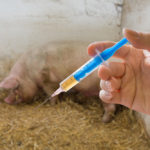
Foot-and-mouth disease remains a threat to North American livestock
North America needs to prepare better for an outbreak of this economically important disease
Foot-and-mouth disease virus and the disease it causes have been intensively studied for decades. Although we know a great deal about the virus and vaccines used to prevent foot-and-mouth disease, it remains endemic across large parts of Africa, South America, the Middle East and Asia, and is a constant threat to North America. Globally, it […] Read more

How and when to change vaccine lines
Animal Health: News Roundup from the September 2018 issue of Canadian Cattlemen
There are many difficult decisions to be made when changing the brand or manufacturer of a vaccine line. Hopefully this article will clarify how to go about making the decision and avoiding any gaps or overlaps that could develop if the right combinations are not chosen. The real comparisons can be made when you know […] Read more

The copious cattle carcass
Prime Cuts with Steve Kay
When consumers think of cattle, they mostly focus on the juicy steak, roast or ground beef that comes from an animal’s carcass. That’s if they even connect these and other beef products to an animal. What they seldom if ever think of is the copious number of byproducts from that animal that find their way […] Read more
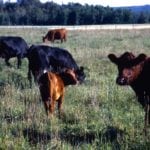
A vaccine that saved the cattle industry
Vet Advice with Dr. Ron Clarke
Blackleg, a disease of many ruminants, is universal. It is most commonly seen in sheep, cattle and goats. Outbreaks have been reported in farmed bison and deer. The acute nature of the disease makes successful treatment difficult. Although the efficacy of commonly used blackleg vaccines has been disputed by the occasional academic based on the […] Read more
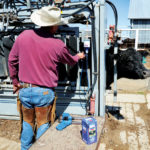
A proper dosage of antibiotics is crucial for efficiency
Animal Health with Heather Smith Thomas
When treating cattle with antibiotics, dewormers and other medications, it is important to use the proper dosage — which is generally determined by the weight of the animal. Thus it is crucial to know, not guess the weight. Under-dosing may not give the desired results, and overdosing in some instances can be harmful. In the […] Read more
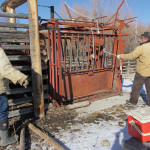
Storage and care of livestock vaccines
We can’t always control how an animal responds to the vaccines we give (in terms of immune response, which can be affected by many factors including health issues and stress levels) but we do have complete control over how we handle and store the vaccines, to make sure they will be optimally potent. Russ Daly, […] Read more
Cattle’s best bet against disease
News Roundup from the December 2015 issue of Canadian Cattlemen
A new research project funded by Genome British Columbia (Genome BC), Genome Canada and other partners is using ‘reverse vaccinology’ to develop vaccines for Johne’s disease and bovine tuberculosis in cattle. These diseases result in annual losses of more than $86 million and $10 million, respectively, in Canada and billions annually worldwide. Led by the […] Read more



